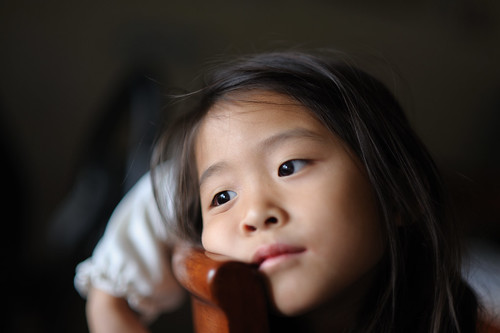The triangle. As I posted before, is the relationship of the three primary functions of your camera that produces the exposure, ISO, Shutter Speed and Aperture. Lets take a quick look at each and what they do first.
ISO - this is the sensitivity of the sensor (or the film) to light. The higher the ISO the more sensitive to light. But, there is a catch, the higher the ISO, the more noise you will get. Some DSLR are better are controlling noise than others. What is acceptable is up to you. The Nikon D700 (and a few others) are considered one of the best DSLR when it comes to high ISO noise reduction.
D700 nikkor 24-70mm f/2.8 @ 24mm f/5.6 ISO 6400 1/20s hand held:

Shutter Speed - this is simple. How fast the shutter opens and closes. Obvious, the fast (shorter) the shutter speed, the less total light it will let pass. Of course, it will also affect subject motion, either help freezing it or show movement (blur effect). Look at the picture above, I purposely shot it at 1/20s so that I can show some motion from the kids.
Aperture - the size of the hole that lets the light pass to the shutter. This is rated by the f/stop. The smaller the f/stop, the wider the hole. So, for example, f/1.8 will be a big hole compared to f/11. This also affects the depth of field (DOF). DOF is the area that will be most in focus. This is also seen most often as the blur back ground in photos you see. People tend to refer to the f/stop as the speed of the lens (we'll talk more about aperture (f/stop) another time).
The shot below was taken with my D700 + Nikkor 85mm f/1.8D at f/1.8. Notice how shallow the DOF is? There is even a noticeable difference between her eyes with the slight angle of her face to the camera!

The primary relationship of the triangle is how they each affect each other when it comes to light. Remember, the amount of light getting to your DSLR sensor is what your exposure will end up to be. Here's a quick sample:
I'm taking a picture and the proper exposure with existing light at ISO 100 is with an aperture f/4 and shutter speed of 1/60s. Let's say this was a picture of my kid walking. At 1/60s there is a good chance there would be motion blur, so I want to use a faster shutter speed. Well, if I do that, then it will let in less light for the given time the shutter opens and closes, and if I keep the other two settings the same, I will under expose. What can I do?
Yup, change one of the other two settings as well. In this case, I want to keep the DOF of f/4 and bump the shutter speed to 1/125s, which is what is called 1 full stop (we'll cover this more in another post). With the aperture static at f/4, I need to change my ISO one stop to match the one stop change I did with the shutter speed. To do this, I would go to ISO 200. Now, I will have less chance of motion blur and still maintain the same exposure as before. Pretty simple!
I'm sure I will say this over and over in my various blogs...the best way to learn is to try it and see. Go out there, set the camera to Aperture Priority, ISO to 200 and the aperture to f/5.6. Now point the camera at a subject to get an exposure. Take a picture. Note the shutter speed the camera chose. Now, set camera to Manual mode. Set all three to what the camera chose before, except change aperture to f/8. Take the same picture as before. Note how much darker the picture is now. Now, change the ISO to 400 and take another shot. It should be about the same as when you first took the shot.
There you go. Now you know the triangle! :) The best thing about DSLR is, it basically cost you nothing to take pictures and you get instant feedback on the LCD screen, although, the LCD can be limiting in details...but it sure beats the heck out of film. So, have fun with it and shoot away. Take notes on what you did and how it turned out. Before you know it, you'll be an expert at the triangle!
As I noted, the triangle's primary effect is the exposure of the image, but all three have their own individual effects as well, like DOF. We'll get into more of this next time.
No comments:
Post a Comment